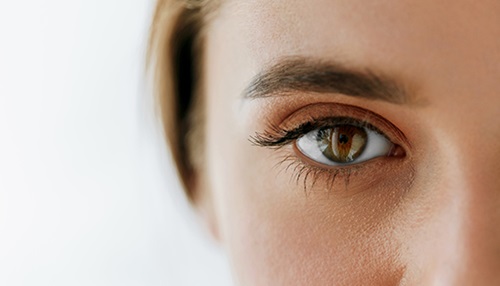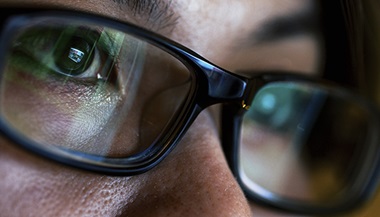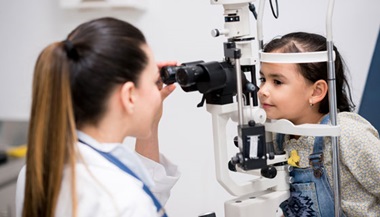Protecting Your Eyes in the Workplace
Featured Expert
About 2,000 U.S. workers each year sustain job-related eye injuries that require medical treatment, according to the National Institute for Occupational Safety and Health. About one-third of those injuries are treated in hospital emergency departments. Every precaution you can take could be crucial to avoiding eye trauma, vision loss and blindness. Fasika Woreta, M.D., M.P.H., director of the Eye Trauma Center at the Wilmer Eye Institute, answers some key questions to help you protect your eyes in the workplace.
What are potential eye hazards at work?
Eye hazards can take many forms with such a wide array of workplace environments.
- Sharp objects or metal striking, scraping, or penetrating the eye
- Chemical splashes
- Thermal burns to the eye and surrounding area
What You Need to Know Eyestrain

Long periods of eye focus, such as when viewing mobile devices and computer screens, can cause eyestrain. Learn about eyestrain causes, symptoms and more.
How can workplace hazards be eliminated?
It’s vital that every workplace prioritize a safe environment. Here are some steps that can be taken to implement safer conditions:
- Educate and train all employees on dangers specific to your workplace.
- Instill procedures that encourage safety throughout the workplace. This should include information on where protective equipment, first-aid kits and emergency eye wash stations are located.
- Ensure employees working in hazardous environments have access to and are wearing eye safety equipment at all times.
- Install barriers such as shields in areas prone to flying debris and dust.
How can I protect my eyes at work?
The best way to protect your eyes from hazards is to wear personal protective eyewear that best suits your work conditions at all times. Be sure to use eye protection that is not cracked or scratched in a way that impairs vision, and that fits your head and face correctly.
Eye protection options include:
- goggles
- face shields
- safety glasses
- full-face respirators
Brush away or vacuum any dust and/or objects from hair, facial area or hats before you remove your protective eyewear. Clean your eyewear after use. You should also avoid rubbing your eyes until your hands have been thoroughly washed.
It’s also important to have regular eye exams — recommended every two years — to ensure your vision is in good condition to safely perform your job.
What should I do if my eyes have been harmed in the workplace?
In the event of a cut or injury:
- Do not attempt to remove any objects lodged in the eye.
- Do not attempt to touch, rub or apply pressure to the eye.
- Place a patch or shield over the area around your eye to protect it.
- Go to the nearest eye trauma center or emergency department.
In the event of chemical or dust/debris exposure to the eye:
- Find the nearest eyewash station at your workplace and flush out your eye immediately before seeking medical attention. In the event an eyewash station is not near or accessible, any source of clean water may be used.
In the event that you are hit in the eye area:
- Do not attempt to apply pressure to the eye.
- Use ice or a cold compress to reduce any swelling.
- Contact your eye doctor to discuss the injury and if additional treatment is needed.
Wilmer Eye Trauma Center








